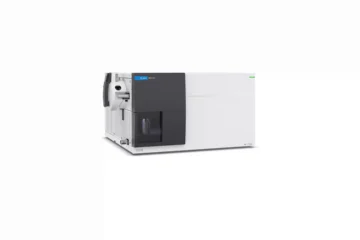High-Performance Liquid Chromatography (HPLC) is an essential analytical technique widely used in various fields such as pharmaceuticals, environmental testing, and food analysis. The sensitivity and detection limits of HPLC are crucial for accurately quantifying analytes, especially in complex matrices. This article explores strategies to improve sensitivity and detection limits in HPLC, enabling analysts to achieve more reliable and precise results.
Understanding Sensitivity and Detection Limits
Before delving into improvement strategies, it’s essential to clarify what we mean by sensitivity and detection limits in HPLC.
- Sensitivity refers to the ability of an analytical method to detect small quantities of an analyte in a sample. It is often expressed as the slope of the calibration curve, which relates the response of the detector to the concentration of the analyte.
- Detection Limit (LOD) is the lowest concentration of an analyte that can be reliably detected, but not necessarily quantified. It is influenced by both the noise of the detector and the signal response of the analyte.
Improving sensitivity and detection limits allows for the detection of lower concentrations of analytes, which is particularly important in fields where trace analysis is critical.
Strategies to Improve Sensitivity and Detection Limits
1. Optimize the HPLC Method
a. Column Selection
Choosing the right column is crucial for achieving optimal separation and sensitivity. Consider the following:
- Particle Size: Smaller particle sizes (e.g., sub-2 µm) increase surface area and improve efficiency, leading to sharper peaks and enhanced sensitivity.
- Column Length: Longer columns can provide better resolution, but they may also lead to broader peaks. A balance is necessary to maintain sensitivity while achieving good separation.
- Stationary Phase: Select a stationary phase that provides high selectivity for the target analytes. Consider using phases with specific functional groups that interact favorably with your analytes.
b. Mobile Phase Optimization
The choice and composition of the mobile phase can significantly affect sensitivity:
- pH and Buffer Composition: Adjusting the pH can enhance the ionization of analytes, improving their detectability. For example, keeping the pH at the pKa of the analyte can optimize the response.
- Organic Solvent Selection: The type and concentration of organic solvents can influence the retention time and peak shape. Utilizing solvents with low UV absorbance (if using UV detection) helps to reduce background noise.
c. Flow Rate Adjustment
Altering the flow rate can enhance sensitivity. Slower flow rates often provide better peak shape and higher sensitivity due to longer interaction times between the analyte and stationary phase. However, this must be balanced against analysis time.
2. Utilize Advanced Detection Techniques
a. Detector Selection
Choosing an appropriate detector is crucial for improving sensitivity:
- UV-Visible (UV-VIS) Detectors: Common in HPLC, they can be optimized by selecting wavelengths that maximize analyte absorption while minimizing background noise.
- Fluorescence Detectors: These are more sensitive than UV detectors and are excellent for trace analysis. If your analytes can be derivatized to form fluorescent compounds, this can significantly improve sensitivity.
- Mass Spectrometry (MS): Coupling HPLC with MS (HPLC-MS) provides unparalleled sensitivity and selectivity, especially for complex mixtures. MS is capable of detecting low femtomole quantities of analytes.
b. Derivatization Techniques
Chemical derivatization can enhance the detectability of certain analytes. For example, transforming an analyte into a more easily detectable form (e.g., making it fluorescent or enhancing its ionization for MS) can improve sensitivity and lower detection limits.
3. Sample Preparation Enhancements
Proper sample preparation is essential for minimizing matrix effects and improving sensitivity:
a. Solid-Phase Extraction (SPE)
SPE can help concentrate analytes from complex matrices, thereby enhancing sensitivity. By selectively extracting target analytes, SPE reduces background noise and matrix interference.
b. Liquid-Liquid Extraction (LLE)
This method can also be employed to isolate and concentrate analytes from complex samples. LLE can help in removing interfering substances, thereby improving the signal-to-noise ratio.
c. Pre-concentration Techniques
Using evaporation or lyophilization can concentrate samples before analysis. This is particularly useful for trace analysis in environmental or biological samples.
4. System Maintenance and Optimization
a. Regular Calibration
Frequent calibration of the HPLC system ensures that sensitivity and performance remain optimal. Regularly calibrate detectors and check the system for leaks or obstructions.
b. Preventive Maintenance
Routine maintenance of the HPLC system, including replacing worn seals, cleaning detectors, and ensuring proper alignment of components, helps maintain performance and sensitivity.
c. Use of Quality Solvents and Reagents
Impurities in solvents and reagents can introduce noise and interfere with signal detection. Always use high-purity solvents and reagents to ensure reliable and sensitive results.
5. Software and Data Processing Techniques
Advancements in software can aid in enhancing sensitivity:
a. Peak Deconvolution
Using advanced software for peak deconvolution can help separate overlapping peaks, improving quantification accuracy and sensitivity.
b. Enhanced Signal Processing
Applying noise reduction algorithms and advanced signal processing techniques can help in distinguishing analyte signals from background noise, thus improving the detection limit.
6. Environmental and Experimental Controls
a. Temperature Control
Maintaining a consistent temperature during the analysis can enhance reproducibility and sensitivity. Variations in temperature can affect both retention times and peak shapes.
b. Minimize System Noise
Employing proper grounding and shielding techniques can reduce electronic noise in the system, leading to better detection limits.
Improving sensitivity and detection limits in HPLC is a multifaceted approach that requires attention to various factors, from method optimization to detector selection and sample preparation. By carefully considering each aspect of the HPLC process, analysts can significantly enhance their ability to detect and quantify analytes in complex samples. Implementing these strategies not only increases the reliability of analytical results but also opens the door to exploring lower concentrations of target compounds, making it invaluable for researchers and industries alike.
By adopting these techniques, HPLC professionals can ensure their methods remain at the forefront of analytical science, yielding results that are both accurate and reproducible.




